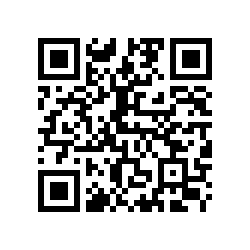Penerapan Metode Bussines To Consumer (B2C) dalam Membangun Sistem Informasi Penjualan Bahan Pembersih Berbasis Web (Studi Kasus pada CCE Store)
(1) STMIK Jakarta STI&K, Jakarta Selatan, Indonesia
(2) STMIK Jakarta STI&K, Jakarta Selatan, Indonesia
(3) STMIK Jakarta STI&K, Jakarta Selatan, Indonesia
(*) Corresponding Author
Abstract
Full Text:
PDFReferences
W. A. Denny, “Rancang Bangun Sistem E-Commerce Dengan Menerapkan B2C Model Pada Mumyclothes Store,” J. Ilmu Data, vol. 1, no. 1, Art. no. 1, Aug. 2021, Accessed: Jul. 11, 2024. [Online]. Available: http://ilmudata.org/index.php/ilmudata/article/view/20
S. Hasan, “Iklan Internet, Kualitas Status Jejaring Sosial (Face Book) Sebagai Media Marketing E-Commer B2C (Business To Consumer) Dan Interaksi Penjual & Pembeli Terhadap Keputusan Pembelian,” J. Manaj., vol. 18, no. 1, Art. no. 1, Feb. 2014, doi: 10.24912/jm.v18i1.374.
M. M. A. Rohandi, “Effectiveness C2C E-Commerce Media In Bandung (Case study at Tokopedia.com and Bukalapak.com),” J. Manaj. Dan Bisnis Performa, vol. 14, no. 2, Art. no. 2, Sep. 2017, doi: 10.29313/performa.v0i2.3628.
M. Mansur and D. N. Mawardah, “Web Based Application Wet Cake Snack Product Distribution Using Concept Business To Business To Consumer,” Digit. Zone J. Teknol. Inf. Dan Komun., vol. 13, no. 1, pp. 67–78, May 2022, doi: 10.31849/digitalzone.v13i1.9793.
M. Mudiantono and N. S. Zatalini, “The Increase of Business to Consumers (B2C) E-Commerce in Semarang, Indonesia (A Case of Lazada.co.id),” INOBIS J. Inov. Bisnis Dan Manaj. Indones., vol. 2, no. 4, Art. no. 4, Sep. 2019, doi: 10.31842/jurnal-inobis.v2i4.106.
Y. Christian, T. Wibowo, and P. A. Winata, “Perancangan Sistem E-Commerce Berbasis Web dengan Metode System Development Life Cycle untuk Usaha Mikro Kecil dan Menengah Pakaian di Kota Batam,” KLIK Kaji. Ilm. Inform. Dan Komput., vol. 4, no. 3, Art. no. 3, Dec. 2023, doi: 10.30865/klik.v4i3.1408.
Q. Nur, “Implementasi Konsep Business To Customers Nusa.Net Dengan Teknologi M-Commerce Menggunakan Metode Feature Driven Development,” Bull. Inf. Technol. BIT, vol. 2, no. 2, Art. no. 2, Aug. 2021.
A. Rabbani, “Manajemen Operasional Di Era Digital Dan Perkembangan E-Commerce,” J. Creat. Power Ambition JCPA, vol. 1, no. 02, Art. no. 02, Nov. 2023.
R. Nelly, “Perlindungan Hukum Terhadap Konsumen Dalam Melakukan Transaksi Jual Beli Online,” Socius J. Penelit. Ilmu-Ilmu Sos., vol. 1, no. 6, Art. no. 6, Feb. 2024, doi: 10.5281/zenodo.10681765.
M. Badrul, “Penerapan Metode waterfall untuk Perancangan Sistem Informasi Inventory Pada Toko Keramik Bintang Terang,” PROSISKO J. Pengemb. Ris. Dan Obs. Sist. Komput., vol. 8, no. 2, Art. no. 2, Sep. 2021, doi: 10.30656/prosisko.v8i2.3852.
Y. I. Chandra, D. R. Irawati, S. Widayati, and K. Airinia, “Rancang Bangun Aplikasi Undangan Pernikahan Online Menggunakan Metode Waterfall Berbasis Web Mobile,” J. SASAK Desain Vis. Dan Komun., vol. 4, no. 2, Art. no. 2, Sep. 2022, doi: 10.30812/sasak.v4i2.2195.
H. Nur, “Penggunaan Metode Waterfall Dalam Rancang Bangun Sistem Informasi Penjualan,” Gener. J., vol. 3, no. 1, Art. no. 1, Jan. 2019, doi: 10.29407/gj.v3i1.12642.
DOI: https://doi.org/10.30645/kesatria.v5i3.456
DOI (PDF): https://doi.org/10.30645/kesatria.v5i3.456.g451
Refbacks
- There are currently no refbacks.
Published Papers Indexed/Abstracted By:














